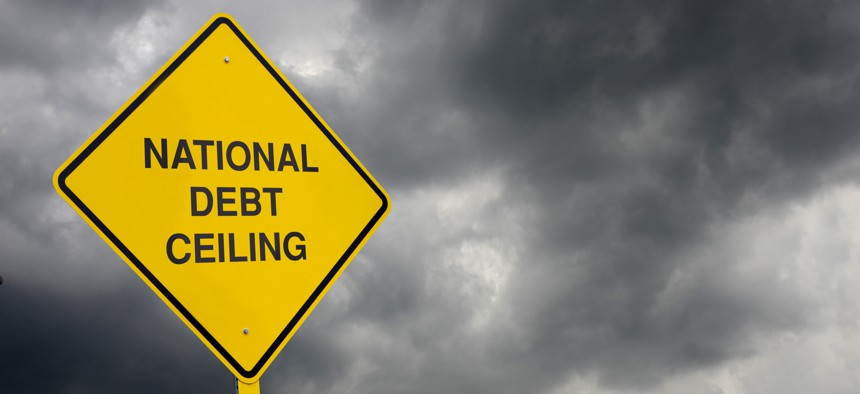
bauhaus1000/Getty Images
Democrats Want an Overhaul of the Debt Ceiling to Avoid Future Crises
The possibility of default has threatened disruptions to federal operations, including furloughs for civil servants.
Congressional Democrats are looking to remove a major piece of fodder contributing to legislative brinkmanship, saying at a hearing on Wednesday the debt ceiling no longer serves its purpose and unnecessarily creates fights that risk economic calamity.
Lawmakers should not even flirt with the unprecedented disruptions for federal agencies that would take place under a debt default, Democrats and witnesses said at the House Budget Committee hearing, calling for decision making on raising the limit to be shifted to the executive branch. The Debt Ceiling Reform Act (S. 3654)—introduced in both chambers this week—would allow the Treasury Department secretary to issue new debt, as long as the president notifies Congress of the need to do so. Lawmakers would retain the ability to vote to block the administration from raising the cap on debt.
“It would not eliminate the debt ceiling,” Rep. Brendan Boyle, D-Penn., who introduced the bill in the House, said at Wednesday’s hearing. “It would take it away from this increasing dysfunction we see in Congress.” He added his proposal was not liberal or conservative, as Treasury secretaries in both parties would eventually have the authority and that would create a “responsible mechanism far better than the one we have.”
There is no blueprint for how the government would operate if it breaches its debt ceiling, though it is clear agencies would not be able to carry out their normal operations. Because typical spending outpaces the revenue the Treasury Department brings in on a given day, the federal government would only be able to pay 60% of its bills in a given month of a default scenario, according to a Bipartisan Policy Center estimate.
Analysts and Treasury officials have sketched out two possible outcomes during a default: the government would either delay payments until it collected enough revenue to cover them, or prioritize some payments while allowing others to go unpaid. In either scenario, agency payments to beneficiaries, states, grantees, contractors and, potentially, their own employees, could be disrupted. Some federal workers could be furloughed or asked to continue working on the promise of back pay in the future.
Congress last faced a debt limit crisis in December, but passed a short-term bill at the 11th hour before ultimately punting the issue to 2023. Rep. Sheila Jackson Lee, D-Texas., said the process created harmful and unnecessary drama.
“We want to be fiscally responsible, not create a political explosion,” Jackson Lee said.
Republicans at the hearing said Congress should not mitigate the force and threat of the debt ceiling, calling it the only mechanism lawmakers have to force conversations about federal spending and deficits. Previous standoffs have led to debt reduction efforts, most recently the 2011 Budget Control Act.
“You want to get rid of it because it’s hard. It’s messy, it’s a distraction,” former Office of Management and Budget Director Mick Mulvaney said at the hearing. “It forces us to have a discussion we otherwise would not have.”
Democrats noted debt ceiling increases do not address future spending, instead allowing Congress only to authorize the repaying of debts already accrued. Prior impasses have led to rating agencies downgrading U.S. credit.
“After a near catastrophic default thanks to political games by our Republican colleagues, it’s time to put the debt ceiling in the hands of the Treasury Secretary,” said Senate Majority Whip Dick Durbin, D-Ill., who introduced the bill in his chamber. “For the sake of the American people and for the good of our economy, we need legislation to reform the way we address the debt ceiling.”







